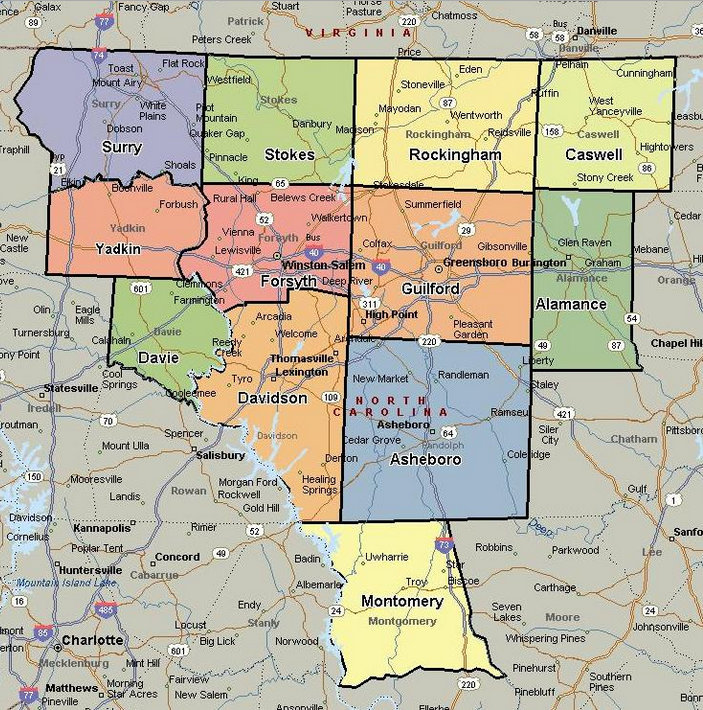
Navigating the Complex Weather Landscape of the Piedmont Triad
The Piedmont Triad region of North Carolina, comprising the cities of Greensboro, Winston-Salem, and High Point, experiences a diverse range of weather patterns throughout the year. From severe thunderstorms to snowfall, understanding local weather conditions is crucial for day-to-day planning and safety. Enter weather radar, a vital tool that provides real-time information on precipitation and its movement.
Unveiling the Web of Weather Radar Systems
Weather radar operates on the principle of electromagnetic radiation. Radar systems emit pulses of electromagnetic energy into the atmosphere, and when these pulses encounter precipitation, they are reflected back to the radar receiver. By analyzing the reflected pulses, meteorologists can determine the location, intensity, and movement of precipitation.
The Piedmont Triad region is served by a network of radar systems, including:
- WSR-88D radar at Greensboro/High Point Airport (KGSO)
- WSR-88D radar at Raleigh-Durham International Airport (KRDU)
- NEXRAD radar at Wilmington International Airport (KILM)
- NEXRAD radar at Greenville-Spartanburg International Airport (KGSP)
These radar systems work in tandem to provide comprehensive coverage of the region, allowing meteorologists to track and predict weather events with greater accuracy.
Interpreting Radar Imagery: A Step-by-Step Guide
Weather radar imagery is presented as a color-coded map, with different colors representing different precipitation intensities. Here’s a breakdown of the color scheme:
- Light Blue: Very light precipitation, often just drizzle
- Dark Blue: Light precipitation, such as rain or snow
- Green: Moderate precipitation
- Yellow: Heavy precipitation
- Orange: Very heavy precipitation, often associated with thunderstorms
- Red: Extreme precipitation, typically indicative of severe thunderstorms or tornadoes
In addition to precipitation intensity, radar imagery also shows the movement of precipitation. Animated radar loops provide a visual representation of how weather systems are evolving, allowing meteorologists to forecast the path and intensity of storms.
Utilizing Weather Radar for Informed Decision-Making
Weather radar is an invaluable resource for individuals, businesses, and public safety officials. By monitoring radar imagery, you can:
- Stay informed about approaching storms and potential hazards
- Plan outdoor activities safely, avoiding periods of heavy precipitation
- Make informed decisions about travel, allowing you to avoid delays or road closures caused by weather
- Assist emergency responders in disaster preparedness and response
Access Real-Time Weather Radar Imagery
There are several ways to access real-time weather radar imagery for the Piedmont Triad region:
- National Weather Service: Visit the National Weather Service website (https://www.weather.gov/) and select the “Radar” tab for interactive radar imagery.
- Weather Underground: The popular weather app Weather Underground (https://www.wunderground.com/) provides detailed radar imagery and forecasts.
- Local News Outlets: Many local news outlets, such as WFMY News 2 and WXII 12, offer radar imagery on their websites and mobile apps.
Conclusion
Weather radar is an indispensable tool for navigating the complex weather patterns of the Piedmont Triad region of North Carolina. By understanding the basics of weather radar imagery, you can make informed decisions about your personal safety, outdoor planning, and overall well-being. Stay updated on the latest weather forecasts and monitor radar imagery to ensure that you are prepared for whatever Mother Nature brings your way.
